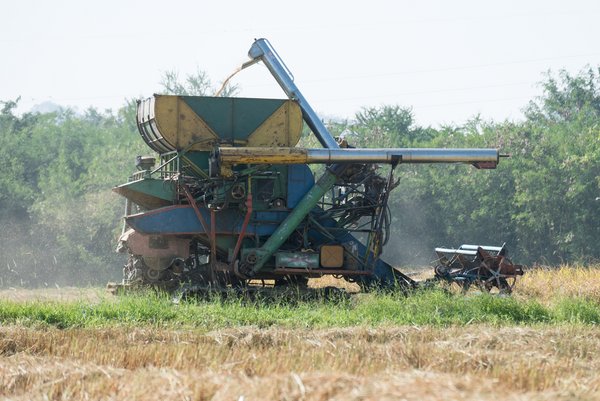- Share this article
- Subscribe to our newsletter
What do higher yields cost nature?
Around 80 per cent of Europe’s land area is used for settlement, agriculture and forestry. In order to increase yields even further than current levels, exploitation is being intensified. “Although intensification measures increase yield, overall, they also have negative impacts on biodiversity," says Dr Michael Beckmann, a biologist at the Helmholtz Centre for Environmental Research (UFZ) in Leipzig, Germany, and co-author of the study. "This is because even agricultural areas offer fauna and flora a valuable habitat – which is something that is frequently not sufficiently taken into consideration."
In addition, previous studies have mostly examined the effects of intensified land use only from one perspective: either with regard to the increase in yield or the loss of biodiversity. "We unfortunately still know far too little about the relationship between the two and what price nature ultimately has to pay for increases in yield," says Beckmann. In the new study, the international team of scientists aimed to address this knowledge gap.
Increases are yield is closely associated with loss of species
To this end, the researchers sifted through some 10,000 topically relevant studies looking for those that collected measurement data for yield and biodiversity both before and after intensification measures. "The majority of the studies fell through the net in this respect. A mere 115 studies actually measured both parameters for the same areas, making them relevant for our purposes," says Beckmann.
The 449 agricultural areas examined in these studies are, however, distributed around the globe and are located in different climatic zones, and the time they have been in use varies greatly. To be able to use these studies for their analysis, the researchers developed a mathematical model that takes account of these differences and renders the data comparable. They then summarised the respective yield increases and biodiversity losses. "We were able to demonstrate that, on average, intensification of land use gave rise to an increase in yield of 20 per cent, but that this is, at the same time, associated with a nine per cent loss of species," says Beckmann.
To obtain a more detailed insight into the impact of intensification measures, the researchers divided the agricultural areas into three classes of intensity - low, medium and high. Proceeding in this way made it possible to compare the results of all three agricultural production systems – arable land, grasslands and forest – with each other. Areas of medium intensity of use demonstrated the highest increase (85 %) in yield following intensification measures. But they also had the greatest loss of species (23 %).
In contrast, areas that already had high intensity of use did not reveal any significant loss of species but still showed an increase in yield of 15 per cent. "Initially, this sounds excellent," says Beckmann. "But where there was not much biodiversity left to start with due to highly intense usage, there is, of course, also not much that can be lost.”
In a comparison of the effects of intensification measures on arable land, grasslands and forests, forests performed best with regard to lower species loss. The study findings indicate that in individual cases such as timber production, intensified land use may also lead to greater yields without any detrimental effect on biodiversity.
However, concrete recommendations for action in specific regions cannot be derived from the study, the scientists confine. "Further research is necessary in order to understand the conditions under which land usage is linked to a low or an especially high risk to biodiversity," says Beckmann. "This is the only way to ensure that we are able to apply intense land use practices and protect biodiversity at the same time. After all, species conservation can and must also take place in our cultivated landscapes."
(UFZ/wi)
Reference:
Beckmann, M. et al.(2019). Conventional land-use intensification reduces species richness and increases production: A global meta-analysis. Global Change Biology





Add a comment
Be the First to Comment